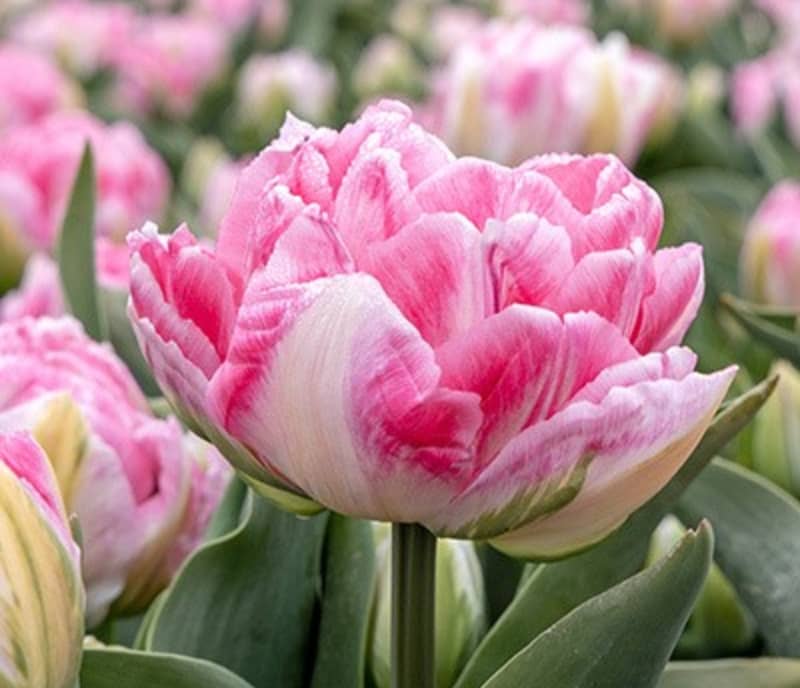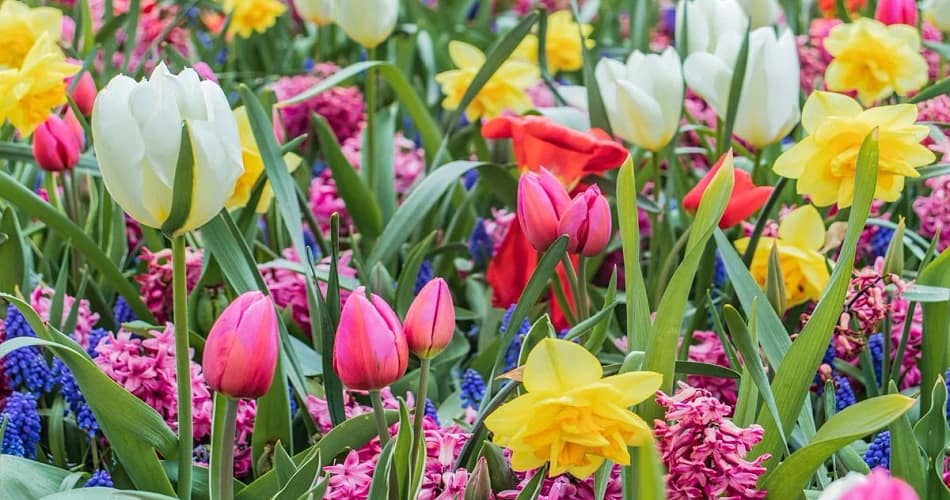Planting tulips is a wonderful way to bring color and charm to your garden. From the delicate Tulipifera tree to the striking Tulip magnolia, these plants offer a wide variety of beauty. Whether you’re interested in planting tulip bulbs or nurturing a tulip seedling into a mature plant, this guide will provide you with all the information you need.
Getting Started with Tulip Planting
Tulip planting can be a rewarding endeavor if done correctly. The first step is choosing the right type of tulip for your garden. If you’re looking for something unique, consider the Tulipa sylvestris or the Tulipa clusiana. These species offer a different look compared to the more common tulips.
Planting tulip bulbs is best done in the fall, about 6 to 8 weeks before the ground freezes. This timing allows the bulbs to establish roots before winter, which is crucial for a beautiful spring bloom. When planting tulip bulbs, place them about 6 inches deep and space them 4 to 6 inches apart. Ensure the pointed end faces upward.
Click Here To Know About The Majestic Chinese Tulip Tree
Growing Tulip Bulbs: Tips and Tricks

Growing tulip bulbs is a process that requires some attention to detail. After planting, cover the bulbs with soil and water them thoroughly. If you live in an area with harsh winters, consider adding a layer of mulch to protect the bulbs from extreme cold.
During the growing season, keep an eye out for pests and diseases that can affect your tulips. Common issues include aphids and fungal diseases. Regularly check your plants and treat any problems early to ensure healthy growth.
For those who want to expand their tulip garden, starting with a tulip seedling can be a good option. A tulip seedling is a young plant that has been grown from seed, and while it may take a few years to bloom, it can be a satisfying way to grow your own tulips.
Know About Tulip Bulbs vs. Tulip Bulblets Click Here : Tulip Bulbs vs. Tulip Bulblets
Exploring Different Tulip Varieties
Tulips come in many shapes, sizes, and colors, making them a versatile choice for any garden. Here are a few notable varieties:
- Tulipa Sylvestris: Also known as the sylvestris tulip, this variety is known for its bright yellow flowers that resemble wildflowers. It’s perfect for naturalizing in grassy areas or under trees.
- Tulipa Clusiana: The Tulipa clusiana is a slender, elegant tulip that blooms in shades of white, pink, and red. It’s often referred to as the lady tulip due to its delicate appearance.
- Curcuma Siam Tulip: The curcuma siam tulip or siam tulip plant is not a true tulip but rather a tropical plant that produces stunning, tulip-like flowers. It thrives in warm, humid climates and adds an exotic touch to any garden.
- Queen of Night Plant: The queen of night plant is a striking variety with deep purple, almost black flowers. This tulip adds drama and elegance to any floral arrangement.
- Tulip Violet: The tulip violet offers a beautiful purple hue that can complement other plants in your garden.
Click Here To Know The Beauty of Pink TulipsCaring for Tulip Trees and Magnolias
The Tulipifera tree, also known as the tulip tree, is a majestic addition to any garden. This tree is known for its tulip-shaped flowers and vibrant green leaves. Tulip trees in bloom are a sight to behold, with their large, yellow-green flowers attracting bees and other pollinators.
To care for a Tulipifera tree, plant it in well-drained soil with plenty of sunlight. Water the tree regularly, especially during its first few years of growth. Pruning is not typically necessary unless you need to remove dead or damaged branches.
Similarly, the Tulip magnolia is another tree that can add beauty to your garden. Its large, pink flowers bloom in early spring, often before the leaves have fully emerged. The tulip tree flower of the magnolia is a popular choice for ornamental gardens due to its showy blooms and pleasant fragrance.
Buying Tulip Plants and Bulbs
When looking to add tulips to your garden, it’s essential to buy high-quality plants and bulbs. You can find tulip bulbs for sale at garden centers, online retailers, and even local nurseries. When selecting bulbs, look for ones that are firm and free from blemishes or mold.
Similarly, you can find tulip plants for sale if you prefer to start with a more mature plant. These plants are typically ready to bloom and can be an excellent option for those who want instant color in their garden.
Know About Tulip Leaves Tree
Planting Tulip Plants
If you’re working with tulip plants rather than bulbs, the process is slightly different. Planting tulip plants is usually done in the spring or early fall. When you plant, make sure to dig a hole that is wide and deep enough to accommodate the plant’s root system. Water the plant thoroughly after planting and mulch around the base to help retain moisture.
Growing tulips from plants can be more straightforward than starting from bulbs, especially if you’re new to gardening. The plants are already established, so they require less care during the initial stages of growth.
Tulip Planting in Containers
If garden space is limited, consider planting tulip bulbs or plants in containers. Choose a container with good drainage and fill it with a high-quality potting mix. Tulip bulbs should be planted at the same depth as they would be in the ground, about 6 inches deep.
For siam tulip or other tropical varieties like the curcuma siam tulip, container planting is ideal as it allows you to move the plants indoors during colder months.
Click Here To Exploring the Majesty of the Tulip PoplarCaring for Tulips Throughout the Year
Caring for tulips is a year-round task, from the initial planting to ensuring they remain healthy and vibrant. Here are some tips for maintaining your tulip garden:
- Watering: Keep the soil consistently moist but not waterlogged. Tulips need regular watering, especially during dry spells.
- Fertilizing: Apply a balanced fertilizer in the fall when planting bulbs and again in the spring as the plants start to grow. This helps provide the necessary nutrients for strong growth and beautiful blooms.
- Pest Control: Watch for common pests like aphids and slugs. Use organic pest control methods whenever possible to keep your garden healthy and safe.
- Deadheading: After your tulips have finished blooming, remove the spent flowers to encourage the plant to focus its energy on storing nutrients for the next growing season.
Click Here To Know About The Liriodendron Tulipifera Tulip Tree
Common Tulip Planting Problems
Even with the best care, you may encounter some challenges when growing tulips. Here are a few common issues and how to address them:
- Poor Blooming: If your tulips are not blooming well, it could be due to improper planting depth, lack of sunlight, or poor soil conditions. Ensure your bulbs are planted correctly and that your tulips are getting enough light.
- Diseases: Fungal diseases like tulip fire can affect tulips. Ensure good air circulation around your plants and avoid overwatering to prevent these issues.
- Rodent Damage: Squirrels and other rodents can dig up and eat tulip bulbs. Use wire mesh or plant deterrents to protect your bulbs.
Click Here To Understanding Tulip Roots
FAQs
When is the best time for planting tulip bulbs?
The best time for planting tulip bulbs is in the fall, about 6 to 8 weeks before the ground freezes. This timing allows the bulbs to establish roots before winter.
Can I grow tulips in containers?
Yes, tulips can be successfully grown in containers. Use a well-draining potting mix and ensure the container has good drainage. Growing tulips in containers is a great option for small spaces.
What is the difference between tulip bulbs and tulip plants?
Tulip bulbs are the dormant form of the plant, which you plant in the fall to bloom in spring. Tulip plants are already established and may be ready to bloom, offering more immediate results.
How do I care for a Tulipifera tree?
The Tulipifera tree requires full sun, well-drained soil, and regular watering. It’s a relatively low-maintenance tree, but you should remove any dead or damaged branches as needed.
Where can I buy tulip plants and bulbs?
You can find tulip bulbs for sale and tulip plants for sale at garden centers, online retailers, and nurseries. Make sure to choose high-quality bulbs and plants for the best results.
What is a Siam tulip?
The Siam tulip is a tropical plant, also known as curcuma siam tulip, that produces tulip-like flowers. It thrives in warm, humid climates and is often grown in containers.

